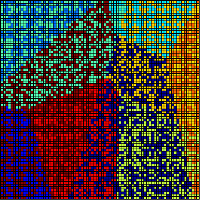Cognitive Radio and Coexistence for Mixed Terrestrial Multicast Communications Systems
In the future many different types of communications systems may well wish to use the same pooled spectrum. The purpose of this project is to investigate how cognitive radio can be applied to terrestrial multicast-based communication systems of different capabilities.
This project will examine how best to extend techniques originally developed for the unlicensed bands to multicast cognitive radio based systems with mixed transmission ranges and transmit power characteristics. Spectrum assignment strategies that incorporate spectrum etiquettes, and distributed artificial intelligence techniques like reinforcement based learning, will be developed that ensure that spectrum usage is maximised. The benefits of using distributed sensing on the uplink to assist with resource allocation on the multicast downlinks will be determined. A key output will be an assessment of the positive and negative interaction of the mixed systems within the pooled spectrum environment.
A mixture of simulation and analysis will be used to assess performance. It is expected that set theory and Markov analysis will be particularly important analytical tools. This work will integrate closely with other activities within the Group.
Key objectives
To understand the implications of using multicast cognitive radio with systems of mixed transmission range, and also the impact on legacy systems.To develop cognitive radio strategies that maximise system usage and revenue for the regulators. To develop performance models which illustrate the benefits on different types of terrestrial communications systems.
Outputs
- Cognitive radio strategies for different multicast terrestrial communications systems.
- Simulations and analysis showing relative performance of the schemes.
- Contributions to conference and journal papers.

Members
- Meng fei Yang
- David Grace
Dates
- October 2006 to
September 2010
Research
